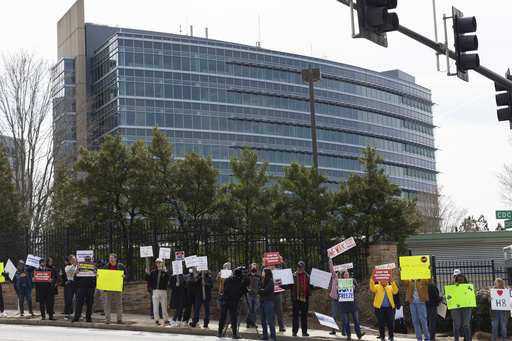
NEW YORK — The top public health agency in the United States, known for its role in managing health crises, is facing a significant loss of personnel within a specialized laboratory initiative that has played a vital role in responding to outbreaks.
According to several officials from the Centers for Disease Control and Prevention (CDC), who spoke anonymously due to restrictions on discussing personnel changes, the fellowship program has been severely impacted by recent layoffs affecting numerous federal agencies.
Emerging approximately a decade ago to address significant lab-safety issues that had plagued the CDC, the ramifications of these layoffs may not present themselves immediately but are expected to create substantial challenges in the future, warns Stephan Monroe, a former CDC leader involved in reforming the agency’s laboratory services.
Monroe emphasized the critical nature of laboratory testing in outbreak management, comparing it to a smoke alarm that provides early warnings. “Identifying initial cases quickly allows for a coordinated and effective response,” he explained. “If early signs are missed, significant transmission may occur before the public health response can take shape.”
With a core budget of $9.2 billion, the CDC is tasked with safeguarding the population from various public health threats, including outbreaks. Prior to the job reductions, the agency employed around 13,000 staff members, including over 1,700 scientists responsible for diagnosing public health threats linked to unexplained health issues.
Details surrounding the specific layoffs have not been disclosed by officials at the Department of Health and Human Services, and some within the CDC report ongoing confusion as they try to ascertain which offices or centers were most affected. In an unusual twist, some employees were initially informed of their layoffs only to later discover they would retain their positions.
Last week, CDC personnel were warned that nearly 1,300 probationary staff members would lose their jobs. However, the ultimate total was revised downward to around 700, as reported by two unnamed officials in the agency.
On Friday, there were signs that the Epidemic Intelligence Service (EIS), a respected two-year training program for emerging disease detectives, would be impacted. Two employees indicated cuts to EIS staffing, but it was later revealed that this program would not face reductions.
Unfortunately, the Laboratory Leadership Service, another program aimed at enhancing lab expertise, saw more dire consequences, with at least 16 of its 24 fellows being let go. This program was established in response to past lab accidents, including dangerous mix-ups involving bird flu strains and anthrax samples.
The Laboratory Leadership Service was intended to recruit outstanding individuals with advanced degrees to bolster CDC and state health laboratories’ testing capabilities and ensure compliance with federal standards. Members of this service frequently traveled to various states, territories, and countries to assist in outbreak investigations and expand testing capabilities. Their significant contributions included expanding testing during a dengue epidemic in American Samoa and rebuilding testing infrastructure in Puerto Rico after natural disasters.
Such specialized knowledge is especially crucial at a time when public health professionals are closely monitoring the emergence of a concerning new strain of bird flu, experts warn. “Our ability to identify and manage health threats, including H5N1, is already under strain, and these cuts are not conducive to enhancing American health,” remarked former CDC director Dr. Tom Frieden on LinkedIn regarding the recent reductions in the lab program staff.

